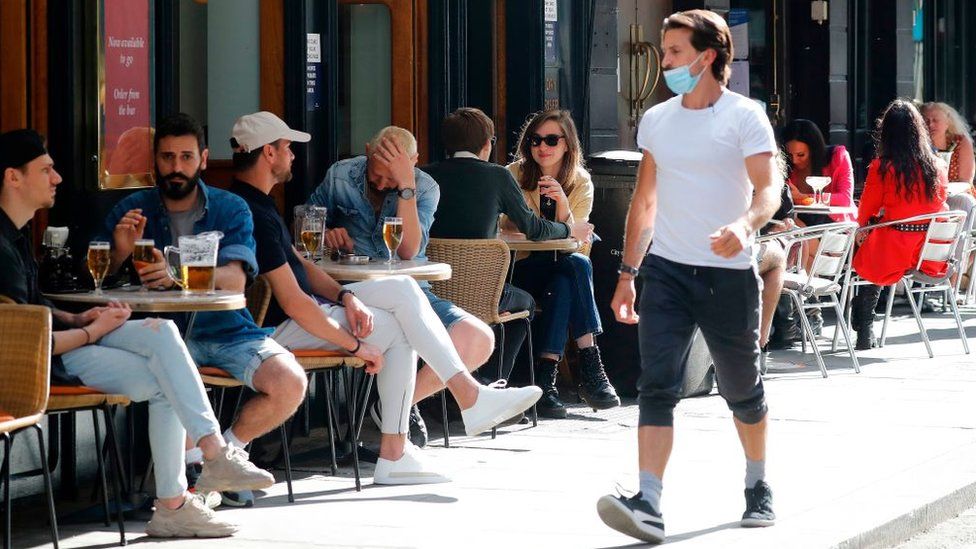Coronavirus: Contact tracers to be reduced by 6,000 in England
- Published
- comments

The NHS test and trace system in England is cutting 6,000 staff by the end of August, the government has announced.
The remaining contact tracers will work alongside local public health teams to reach more infected people and their contacts in communities.
It comes after criticism that the national system was not tapping into local knowledge.
The approach has been used in virus hotspots like Blackburn and Luton.
And it's now being offered to all councils that are responsible for public health in their area.
Test and trace is staffed by NHS clinicians and people who were trained to become contact tracers during the pandemic.
NHS staff who offer advice to people who have tested positive for coronavirus will not be laid off.
But the national service will shrink from 18,000 contact tracers to 12,000 with the remaining non-NHS call handlers redeployed as part of dedicated local test and trace teams, the Department of Health says.
This means local areas will have "ring-fenced teams" from the national test and trace service.
Another 200 walk-in testing centres will also open by October.
As part of NHS Test and Trace, public health teams dealing with outbreaks in factories or care homes have consistently reached more than 90% of the contacts on their lists.
Outside of those very localised outbreaks, it is call centres who trace contacts.
But they don't reach as many contacts - their success rate for reaching contacts who don't live together peaked at just over 70% in the middle of July, but has fallen since then.
A return to old-fashioned contact tracing?
In May, the Health Secretary, Matt Hancock, announced that an "army" of contact tracers would be recruited for the NHS Test and Trace service.
Early on, there were reports that new recruits were sitting idle - with one telling the BBC that she spent her time watching Netflix.
Thousands are now being stood down in England with more of their work conducted by local staff with knowledge of their area. The Department of Health has said that this is to provide a "more tailored approach".
But critics will see it as the latest example of the government departing from its centralised approach to tackling the outbreak. In June the government had to postpone its idea of using a national app to identify potentially infected people - because it didn't work.
Now, the top-down, high-tech strategy for contact tracing is making way for what seasoned local public health officials describe as old-fashioned "shoe leather epidemiology".
This relies on people with local knowledge collecting information by going door-to-door on foot.
'Localised approach'
Dido Harding, the head of NHS Test and Trace, said: "We have always been clear that NHS Test and Trace must be local by default and that we do not operate alone - we work with and through partners across the country.
"As we learn more about the spread of the disease, we are able to move to our planned next step and become even more effective in tackling the virus.
"After successful trials in a small number of local areas, I am very pleased to announce that we are now offering this integrated localised approach to all local authorities to ensure we can reach more people in their communities and stop the spread of Covid-19," she said.
- Published4 August 2020
- Published7 August 2020
- Published5 August 2021